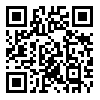مجله رویش روانشناسی از دادن گواهیهای کاغذی معذور است. لطفا تقاضا نکنید. همه گواهی ها در صفحه شخصی کاربران موجود است.
year 14, Issue 6 (summer 2025 2025)
Rooyesh 2025, 14(6): 231-242 |
Back to browse issues page
Download citation:
BibTeX | RIS | EndNote | Medlars | ProCite | Reference Manager | RefWorks
Send citation to:



BibTeX | RIS | EndNote | Medlars | ProCite | Reference Manager | RefWorks
Send citation to:
Ahmadi V, Gholipour M R, Ajam M. (2025). Application of Educational Technologies in Cultivating Varieties of Critical and Creative Thinking: A Systematic Review Study. Rooyesh. 14(6), 231-242.
URL: http://frooyesh.ir/article-1-5896-en.html
URL: http://frooyesh.ir/article-1-5896-en.html
1- PhD Student in Curriculum Planning, Faculty Of Education And Psychology, University of Isfahan, Isfahan, Iran. , vahidahmadi866@gmail.com
2- PhD Student in Curriculum Planning, Faculty Of Education And Psychology, University of Isfahan, Isfahan, Iran.
2- PhD Student in Curriculum Planning, Faculty Of Education And Psychology, University of Isfahan, Isfahan, Iran.
Abstract: (495 Views)
This study reviews research conducted between 2010 and 2025 on the use of educational technologies to cultivate various types of critical and creative thinking in Iran and worldwide. The literature search was carried out across reputable domestic and international databases including the Iranian Scientific Information Database, MagIran, NoorMags, the Comprehensive Portal of Humanities, ERIC, ScienceDirect, Taylor & Francis, and Google Scholar—using the keywords “educational technology,” “critical thinking,” “information and communication technology,” and “creative thinking,” along with their English equivalents. The quality of the selected articles was assessed using the checklist developed by Carlson et al. (2007). From an initial pool of 60 identified articles, 20 were ultimately included after screening titles, applying inclusion and exclusion criteria, and conducting full-text evaluations. Based on the reviewed studies, the analysis focused on 27 primary domains and three subdomains. The primary domains were organized under the three subdomains of cognitive and metacognitive skills, learning and academic achievement, and motivational aspects. This structure was framed within the study’s central focus: the application of educational technologies in cultivating varieties of critical and creative thinking. While educational technologies hold the potential to significantly influence the development of these thinking skills, greater attention should be given to specific areas such as virtual reality, augmented reality, and gamification. To support this goal, curricula should be designed and delivered in accordance with advances in educational technology to better cultivate students’ critical and creative thinking skills.
Type of Article: systematic review |
Subject:
Educational Psychology
Received: 2024/12/27 | Accepted: 2025/05/28 | ePublished: 2025/08/28
Received: 2024/12/27 | Accepted: 2025/05/28 | ePublished: 2025/08/28
Send email to the article author
| Rights and permissions | |
 |
This work is licensed under a Creative Commons Attribution-NonCommercial 4.0 International License. |





